Wenyi Zhang
OpenPathNet: An Open-Source RF Multipath Data Generator for AI-Driven Wireless Systems
Dec 19, 2025Abstract:The convergence of artificial intelligence (AI) and sixth-generation (6G) wireless technologies is driving an urgent need for large-scale, high-fidelity, and reproducible radio frequency (RF) datasets. Existing resources, such as CKMImageNet, primarily provide preprocessed and image-based channel representations, which conceal the fine-grained physical characteristics of signal propagation that are essential for effective AI modeling. To bridge this gap, we present OpenPathNet, an open-source RF multipath data generator accompanied by a publicly released dataset for AI-driven wireless research. Distinct from prior datasets, OpenPathNet offers disaggregated and physically consistent multipath parameters, including per-path gain, time of arrival (ToA), and spatial angles, derived from high-precision ray tracing simulations constructed on real-world environment maps. By adopting a modular, parameterized pipeline, OpenPathNet enables reproducible generation of multipath data and can be readily extended to new environments and configurations, improving scalability and transparency. The released generator and accompanying dataset provide an extensible testbed that holds promise for advancing studies on channel modeling, beam prediction, environment-aware communication, and integrated sensing in AI-enabled 6G systems. The source code and dataset are publicly available at https://github.com/liu-lz/OpenPathNet.
PINN and GNN-based RF Map Construction for Wireless Communication Systems
Jul 30, 2025
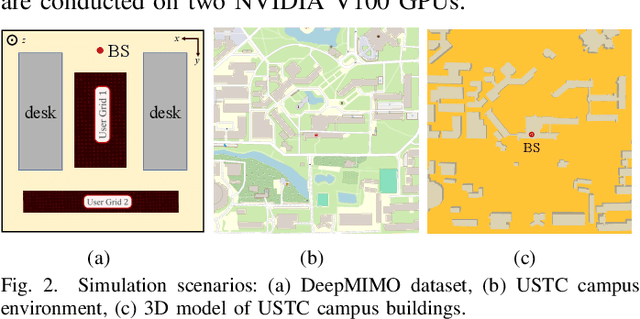
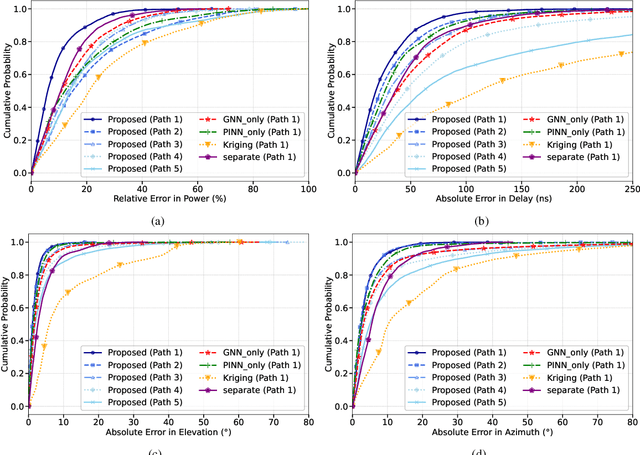
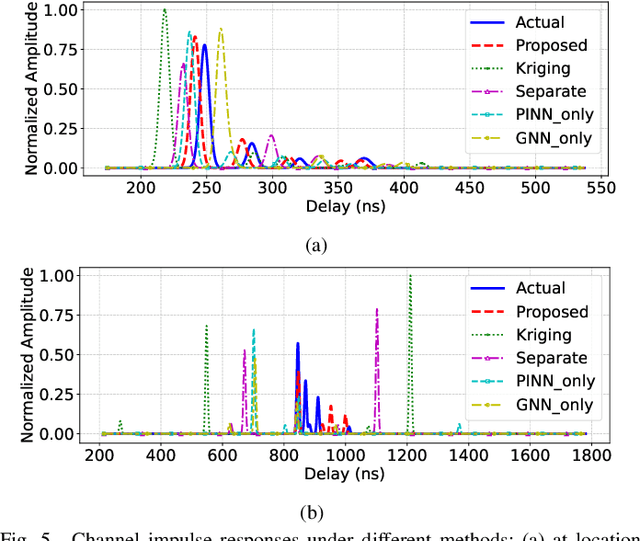
Abstract:Radio frequency (RF) map is a promising technique for capturing the characteristics of multipath signal propagation, offering critical support for channel modeling, coverage analysis, and beamforming in wireless communication networks. This paper proposes a novel RF map construction method based on a combination of physics-informed neural network (PINN) and graph neural network (GNN). The PINN incorporates physical constraints derived from electromagnetic propagation laws to guide the learning process, while the GNN models spatial correlations among receiver locations. By parameterizing multipath signals into received power, delay, and angle of arrival (AoA), and integrating both physical priors and spatial dependencies, the proposed method achieves accurate prediction of multipath parameters. Experimental results demonstrate that the method enables high-precision RF map construction under sparse sampling conditions and delivers robust performance in both indoor and complex outdoor environments, outperforming baseline methods in terms of generalization and accuracy.
PATFinger: Prompt-Adapted Transferable Fingerprinting against Unauthorized Multimodal Dataset Usage
Apr 15, 2025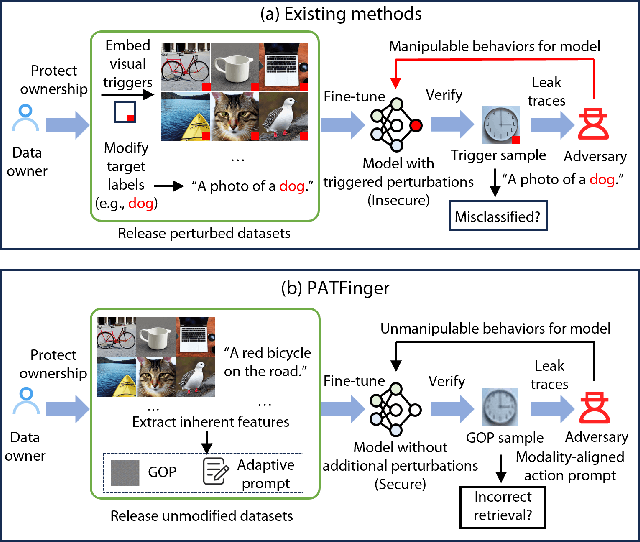

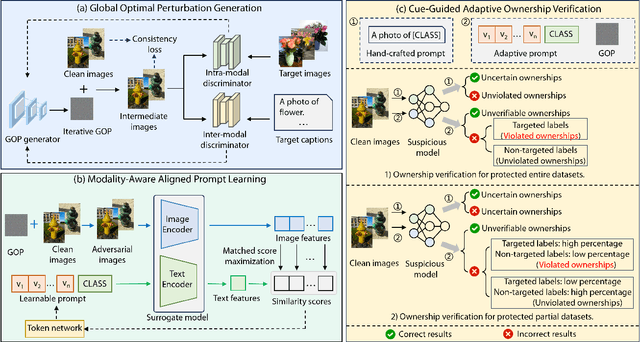
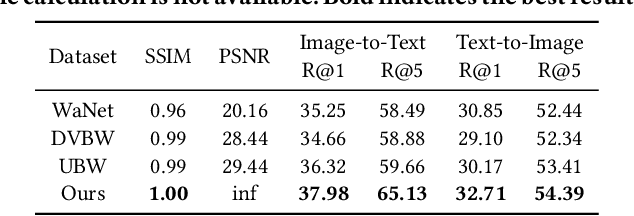
Abstract:The multimodal datasets can be leveraged to pre-train large-scale vision-language models by providing cross-modal semantics. Current endeavors for determining the usage of datasets mainly focus on single-modal dataset ownership verification through intrusive methods and non-intrusive techniques, while cross-modal approaches remain under-explored. Intrusive methods can adapt to multimodal datasets but degrade model accuracy, while non-intrusive methods rely on label-driven decision boundaries that fail to guarantee stable behaviors for verification. To address these issues, we propose a novel prompt-adapted transferable fingerprinting scheme from a training-free perspective, called PATFinger, which incorporates the global optimal perturbation (GOP) and the adaptive prompts to capture dataset-specific distribution characteristics. Our scheme utilizes inherent dataset attributes as fingerprints instead of compelling the model to learn triggers. The GOP is derived from the sample distribution to maximize embedding drifts between different modalities. Subsequently, our PATFinger re-aligns the adaptive prompt with GOP samples to capture the cross-modal interactions on the carefully crafted surrogate model. This allows the dataset owner to check the usage of datasets by observing specific prediction behaviors linked to the PATFinger during retrieval queries. Extensive experiments demonstrate the effectiveness of our scheme against unauthorized multimodal dataset usage on various cross-modal retrieval architectures by 30% over state-of-the-art baselines.
AB-Cache: Training-Free Acceleration of Diffusion Models via Adams-Bashforth Cached Feature Reuse
Apr 13, 2025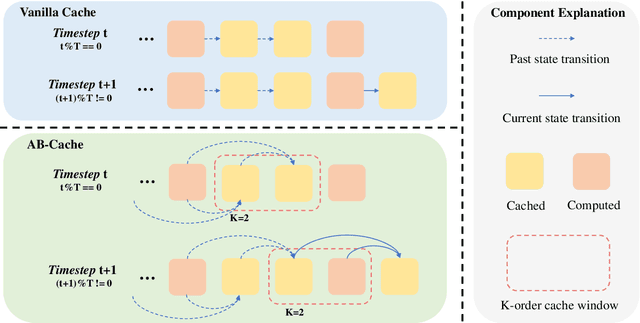
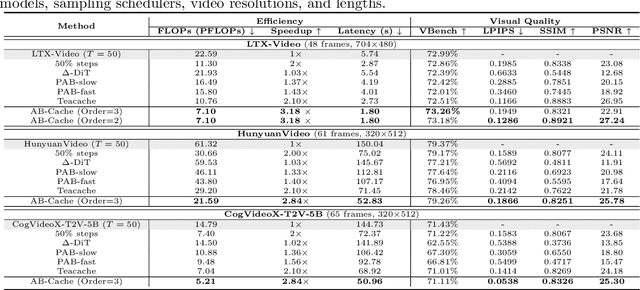
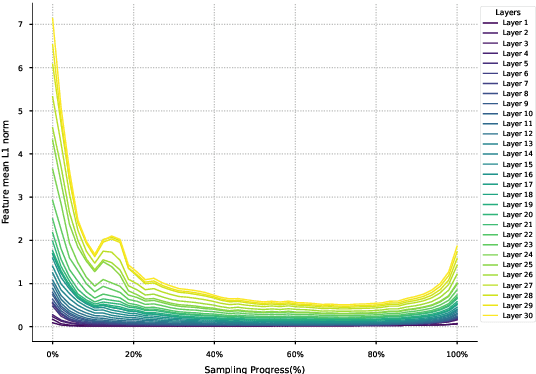

Abstract:Diffusion models have demonstrated remarkable success in generative tasks, yet their iterative denoising process results in slow inference, limiting their practicality. While existing acceleration methods exploit the well-known U-shaped similarity pattern between adjacent steps through caching mechanisms, they lack theoretical foundation and rely on simplistic computation reuse, often leading to performance degradation. In this work, we provide a theoretical understanding by analyzing the denoising process through the second-order Adams-Bashforth method, revealing a linear relationship between the outputs of consecutive steps. This analysis explains why the outputs of adjacent steps exhibit a U-shaped pattern. Furthermore, extending Adams-Bashforth method to higher order, we propose a novel caching-based acceleration approach for diffusion models, instead of directly reusing cached results, with a truncation error bound of only \(O(h^k)\) where $h$ is the step size. Extensive validation across diverse image and video diffusion models (including HunyuanVideo and FLUX.1-dev) with various schedulers demonstrates our method's effectiveness in achieving nearly $3\times$ speedup while maintaining original performance levels, offering a practical real-time solution without compromising generation quality.
A Survey of Foundation Models for Music Understanding
Sep 15, 2024
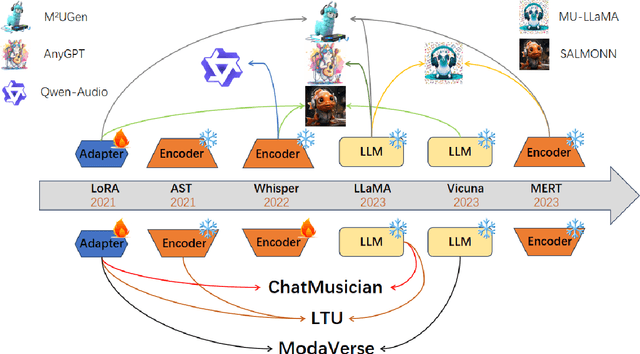

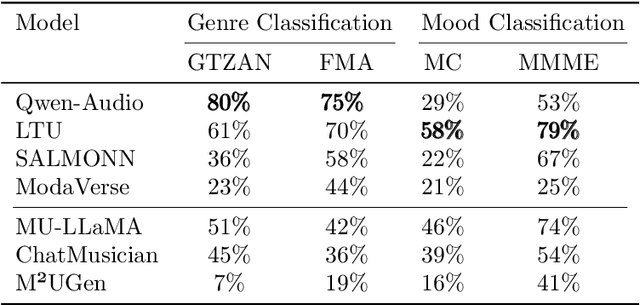
Abstract:Music is essential in daily life, fulfilling emotional and entertainment needs, and connecting us personally, socially, and culturally. A better understanding of music can enhance our emotions, cognitive skills, and cultural connections. The rapid advancement of artificial intelligence (AI) has introduced new ways to analyze music, aiming to replicate human understanding of music and provide related services. While the traditional models focused on audio features and simple tasks, the recent development of large language models (LLMs) and foundation models (FMs), which excel in various fields by integrating semantic information and demonstrating strong reasoning abilities, could capture complex musical features and patterns, integrate music with language and incorporate rich musical, emotional and psychological knowledge. Therefore, they have the potential in handling complex music understanding tasks from a semantic perspective, producing outputs closer to human perception. This work, to our best knowledge, is one of the early reviews of the intersection of AI techniques and music understanding. We investigated, analyzed, and tested recent large-scale music foundation models in respect of their music comprehension abilities. We also discussed their limitations and proposed possible future directions, offering insights for researchers in this field.
Rethinking the Key Factors for the Generalization of Remote Sensing Stereo Matching Networks
Aug 14, 2024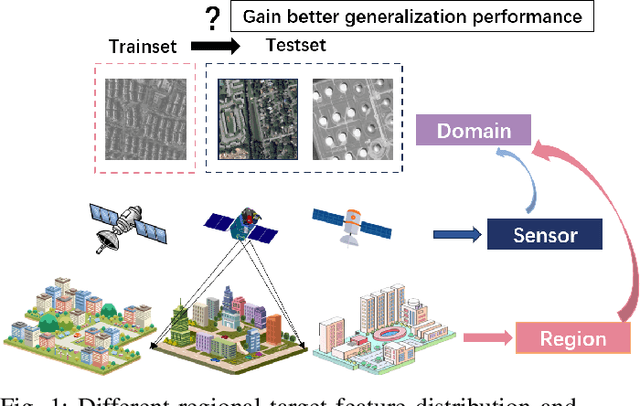
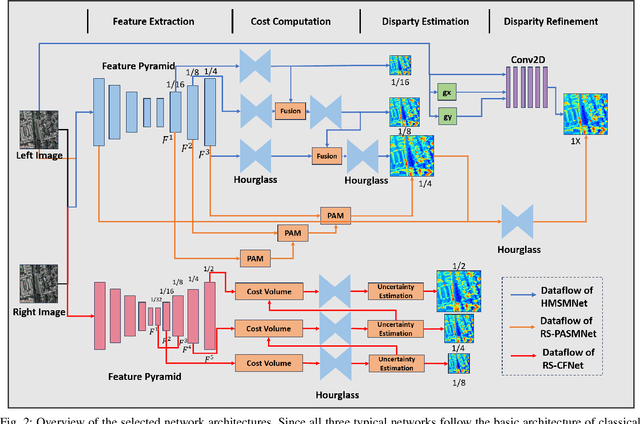
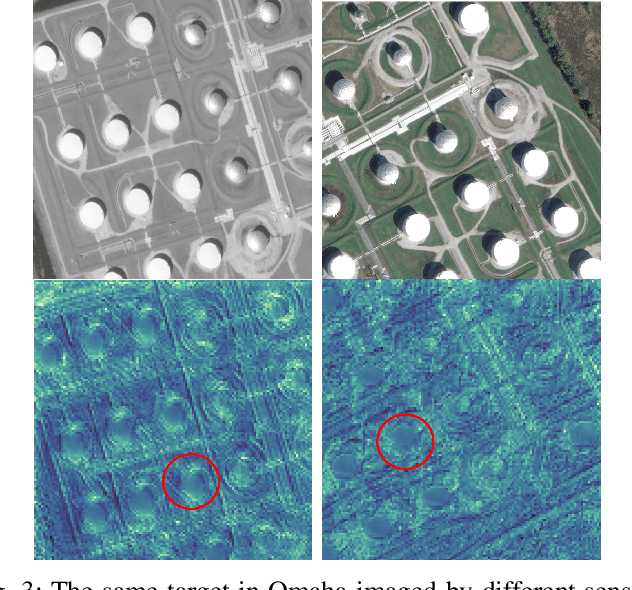
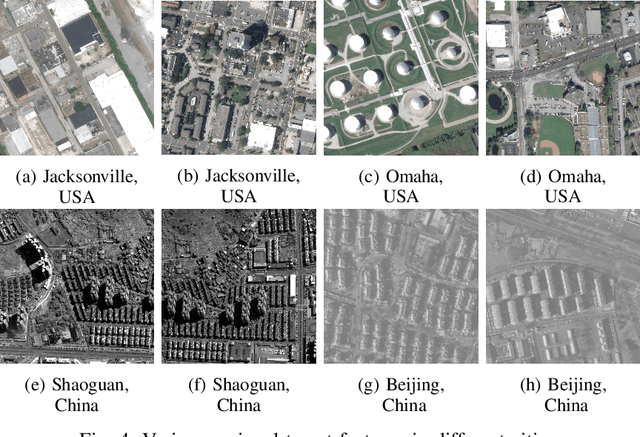
Abstract:Stereo matching, a critical step of 3D reconstruction, has fully shifted towards deep learning due to its strong feature representation of remote sensing images. However, ground truth for stereo matching task relies on expensive airborne LiDAR data, thus making it difficult to obtain enough samples for supervised learning. To improve the generalization ability of stereo matching networks on cross-domain data from different sensors and scenarios, in this paper, we dedicate to study key training factors from three perspectives. (1) For the selection of training dataset, it is important to select data with similar regional target distribution as the test set instead of utilizing data from the same sensor. (2) For model structure, cascaded structure that flexibly adapts to different sizes of features is preferred. (3) For training manner, unsupervised methods generalize better than supervised methods, and we design an unsupervised early-stop strategy to help retain the best model with pre-trained weights as the basis. Extensive experiments are conducted to support the previous findings, on the basis of which we present an unsupervised stereo matching network with good generalization performance. We release the source code and the datasets at https://github.com/Elenairene/RKF_RSSM to reproduce the results and encourage future work.
Variations on a Theme by Blahut and Arimoto
May 04, 2023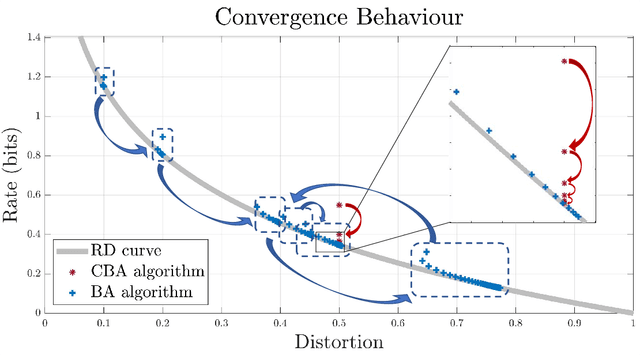
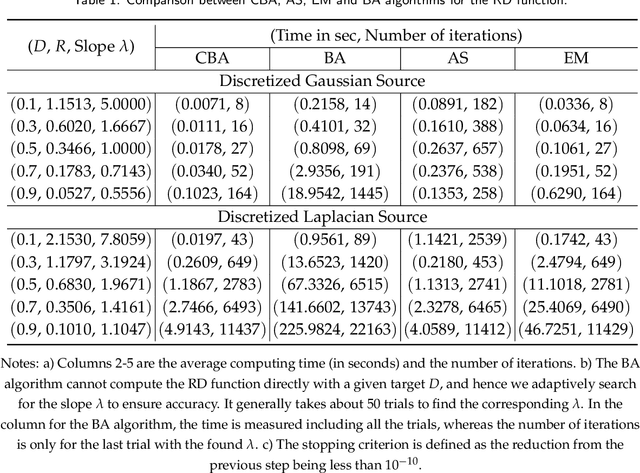
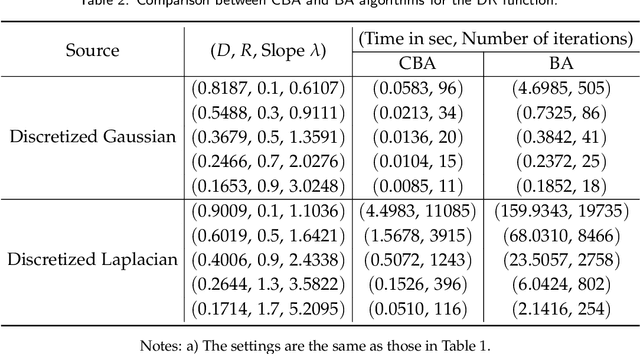
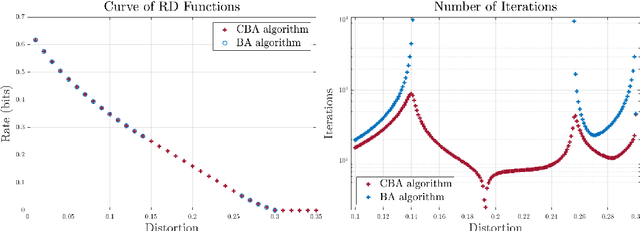
Abstract:The Blahut-Arimoto (BA) algorithm has played a fundamental role in the numerical computation of rate-distortion (RD) functions. This algorithm possesses a desirable monotonic convergence property by alternatively minimizing its Lagrangian with a fixed multiplier. In this paper, we propose a novel modification of the BA algorithm, letting the multiplier be updated in each iteration via a one-dimensional root-finding step with respect to a monotonic univariate function, which can be efficiently implemented by Newton's method. This allows the multiplier to be updated in a flexible and efficient manner, overcoming a major drawback of the original BA algorithm wherein the multiplier is fixed throughout iterations. Consequently, the modified algorithm is capable of directly computing the RD function for a given target distortion, without exploring the entire RD curve as in the original BA algorithm. A theoretical analysis shows that the modified algorithm still converges to the RD function and the convergence rate is $\Theta(1/n)$, where $n$ denotes the number of iterations. Numerical experiments demonstrate that the modified algorithm directly computes the RD function with a given target distortion, and it significantly accelerates the original BA algorithm.
Unimodal Training-Multimodal Prediction: Cross-modal Federated Learning with Hierarchical Aggregation
Mar 27, 2023Abstract:Multimodal learning has seen great success mining data features from multiple modalities with remarkable model performance improvement. Meanwhile, federated learning (FL) addresses the data sharing problem, enabling privacy-preserved collaborative training to provide sufficient precious data. Great potential, therefore, arises with the confluence of them, known as multimodal federated learning. However, limitation lies in the predominant approaches as they often assume that each local dataset records samples from all modalities. In this paper, we aim to bridge this gap by proposing an Unimodal Training - Multimodal Prediction (UTMP) framework under the context of multimodal federated learning. We design HA-Fedformer, a novel transformer-based model that empowers unimodal training with only a unimodal dataset at the client and multimodal testing by aggregating multiple clients' knowledge for better accuracy. The key advantages are twofold. Firstly, to alleviate the impact of data non-IID, we develop an uncertainty-aware aggregation method for the local encoders with layer-wise Markov Chain Monte Carlo sampling. Secondly, to overcome the challenge of unaligned language sequence, we implement a cross-modal decoder aggregation to capture the hidden signal correlation between decoders trained by data from different modalities. Our experiments on popular sentiment analysis benchmarks, CMU-MOSI and CMU-MOSEI, demonstrate that HA-Fedformer significantly outperforms state-of-the-art multimodal models under the UTMP federated learning frameworks, with 15%-20% improvement on most attributes.
An Indirect Rate-Distortion Characterization for Semantic Sources: General Model and the Case of Gaussian Observation
Jan 29, 2022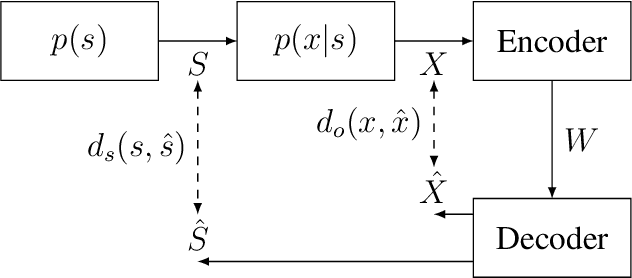
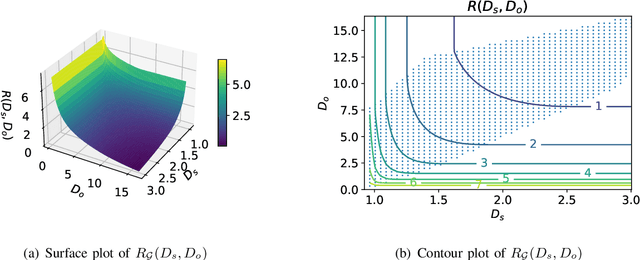
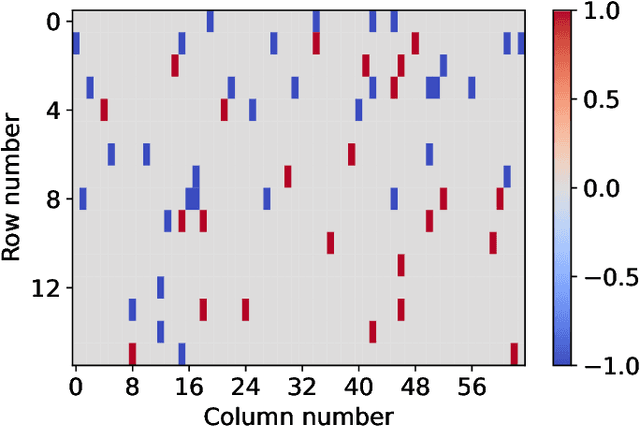
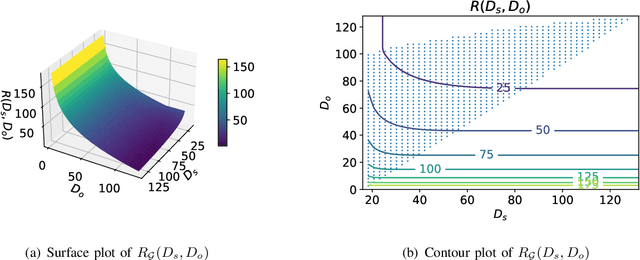
Abstract:A new source model, which consists of an intrinsic state part and an extrinsic observation part, is proposed and its information-theoretic characterization, namely its rate-distortion function, is defined and analyzed. Such a source model is motivated by the recent surge of interest in the semantic aspect of information: the intrinsic state corresponds to the semantic feature of the source, which in general is not observable but can only be inferred from the extrinsic observation. There are two distortion measures, one between the intrinsic state and its reproduction, and the other between the extrinsic observation and its reproduction. Under a given code rate, the tradeoff between these two distortion measures is characterized by the rate-distortion function, which is solved via the indirect rate-distortion theory and is termed as the semantic rate-distortion function of the source. As an application of the general model and its analysis, the case of Gaussian extrinsic observation is studied, assuming a linear relationship between the intrinsic state and the extrinsic observation, under a quadratic distortion structure. The semantic rate-distortion function is shown to be the solution of a convex programming programming with respect to an error covariance matrix, and a reverse water-filling type of solution is provided when the model further satisfies a diagonalizability condition.
Decentralized Federated Learning: Balancing Communication and Computing Costs
Aug 08, 2021
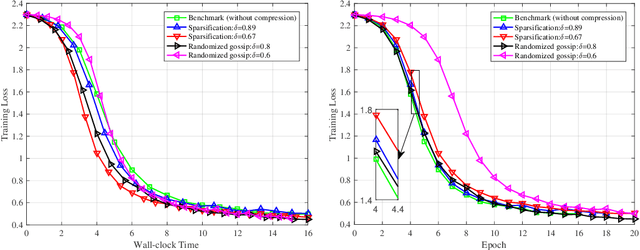
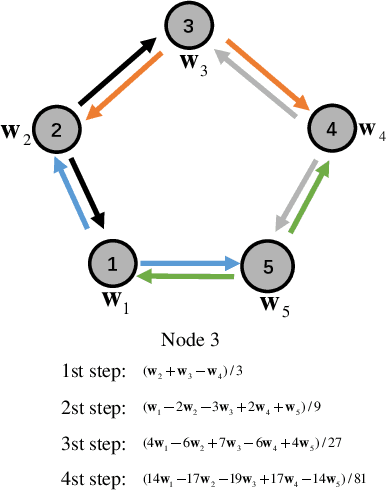
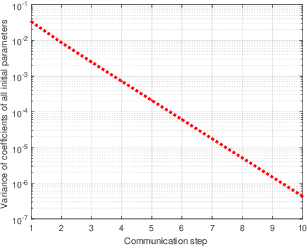
Abstract:Decentralized federated learning (DFL) is a powerful framework of distributed machine learning and decentralized stochastic gradient descent (SGD) is a driving engine for DFL. The performance of decentralized SGD is jointly influenced by communication-efficiency and convergence rate. In this paper, we propose a general decentralized federated learning framework to strike a balance between communication-efficiency and convergence performance. The proposed framework performs both multiple local updates and multiple inter-node communications periodically, unifying traditional decentralized SGD methods. We establish strong convergence guarantees for the proposed DFL algorithm without the assumption of convex objective function. The balance of communication and computation rounds is essential to optimize decentralized federated learning under constrained communication and computation resources. For further improving communication-efficiency of DFL, compressed communication is applied to DFL, named DFL with compressed communication (C-DFL). The proposed C-DFL exhibits linear convergence for strongly convex objectives. Experiment results based on MNIST and CIFAR-10 datasets illustrate the superiority of DFL over traditional decentralized SGD methods and show that C-DFL further enhances communication-efficiency.
 Add to Chrome
Add to Chrome Add to Firefox
Add to Firefox Add to Edge
Add to Edge